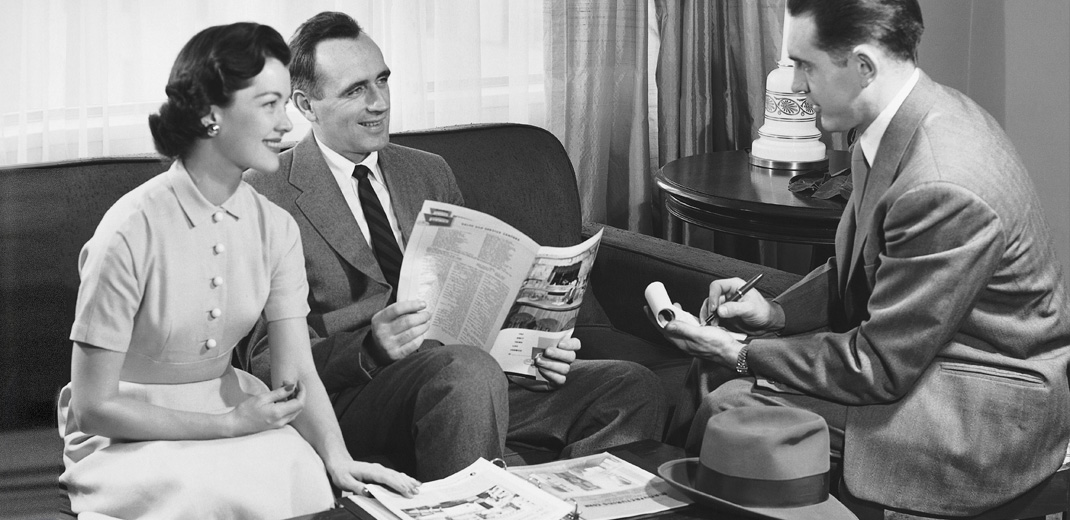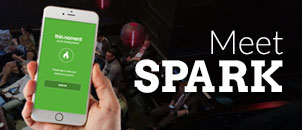The boundary between physical and digital life has become so blurred that a new adjective is being used to capture the phenomenon: ‘phygital’. In late October, the concept of phygital retail landed on front pages with the announcement that Lowe’s is testing two retail service robots in a San Jose store. Of course, the sci-fi stunt couldn’t slip past John Oliver. The comedian responded with a fake ad on behalf of The Home Depot, suggesting that the real purpose of home improvement employees is to save couples from destroying their relationships – a task that robots can’t handle.
One of brick-and-mortar retail’s big advantages has always been that real people can help you find items and make decisions. So, are phygital moves like Lowe’s just pure publicity stunts? Or could blending the physical and digital worlds actually help businesses, improve the shopping experience – and not wreck marriages?
My take is that content strategies will make or break the success of this phygital trend. Retailers who can provide entertainment and useful tools that were previously unavailable may win over shoppers to the phygital trend. Stores that just phase in phygital experiences to collect data and push promotions will likely creep out consumers.
Why the Interest in Phygital?
The phygital trend began with the competition between offline and online retail. The Lowe’s robots – like Amazon’s drones – are emblematic of how retailers are coping with a tricky competition. Ecommerce is growing four to five times faster brick-and-mortar retail, according to eMarketer. However, physical stores still account for 93.6% of total retail sales, and therefore continue to dominate the market.
If multi-channel retailers can mesh the best of ecommerce and brick-and-mortar retail, the thinking is that they can fend off pure-play e-tailers like Amazon because people will love coming to the stores.
Entertainment v. Data v. Utility
Right now, the phygital approaches fall into three main camps.
The “Entertainment Camp” makes phygital a novelty and attraction. A good example is Lego’s augmented reality box, which allows customers to hold up a Lego set and instantly see the pieces assembled on the screen in a 3D animation. It doesn’t really provide utility to the shopper, but it’s fun to use.
The “Data Camp” is wiring stores with Wi-Fi beacons and introducing mobile apps that can track shopper movement, push location-based advertisements (down to the aisle and your position in it) and offer recommendations or deals based on purchasing history. It’s essentially Amazon personalization offline. The reactions are mixed with some retailers overdoing the push notifications, and many people drawing comparisons to the sci-fi eye scanning technology in the movie Minority Report.
Last, the ‘Utility Camp’ tries to make phygital tools useful to shoppers. A good example is C&A’s FashionLike, a digital clothes hanger that displays how many people “Like” the clothing item on Facebook. Whether shoppers seek social validation or prefer to be ‘mavericks’, they can consider this data in their decisions. C&A also gets tons of information about what consumers like and how social awareness influences shopping decisions.
Gettin’ Phygi With it – Enter the Role of Content
The ultimate phygital store should somehow combine entertainment, data and utility, and content is the key. Although it doesn’t require a robot, Lowe’s new OSHbots are perfect for imaging how the home improvement company could achieve this phygital trifecta. Currently, OSHbots can scan and recognize items (e.g. a specific screw or spare part), take customers to products and provide information about promotions and inventory. Four uses of content could up the OSHbot’s game:
- Give it a Personality – One of the things that makes Apple’s Siri so successful is its huge repertoire of smart ass remarks. Siri is not just your digital assistant – she has humor that makes her endearing and entertaining. The OSHbot should provide surprises and a dose of humanity that make shoppers look forward to interacting with it. Coming up with this personality will take cooperation between content strategists and engineers.
- Provide Comparison Engines – One advantage of ecommerce is the ease of comparing multiple items. If you’ve shopped for laptops, you know Amazon, CDW, CNET and other sites will help you compare laptops spec-by-spec. Why not have the OSHbots do the same for laundry machines, cooktops, refrigerators or dishwashers, which are expensive and usually difficult to evaluate? Again, it takes engineering and content.
- Use Testimonials and UGC – With all the craze around user-generated content (UGC), it’s amazing that customer testimonials and videos haven’t landed in retail stores. For big purchases, people often showroom the item, then read reviews and make their purchase later, online. Have OSHbots deliver a stream of curated user reviews that can help with decision making in-store. People use their smartphones to evaluate purchase in-store anyway, so why not increase the chances they will buy from Lowe’s? They could even stream reviews directly into the product comparison engines.
- How-To Guides – Lowes.com is loaded with DIY projects, a Kitchen Planning Guide, how-to articles and tons of other practical advice. What if shoppers could select a project in OSHbot and have it lead them from section to section or product to product? Instead of arriving at Lowe’s with an idea then meandering around in search of items, shoppers could load the project on OSHbot and use the robot to get all the products necessary.
Combined, these four ideas would provide entertainment value, collect tons of data without being sketchy and help shoppers with decision-making. It’s easy to imagine parallels for clothing stores, electronics dealers, outdoor gear shops and even grocery stores. Frankly, a robot may be overkill for most stores. Well-placed iPads or mobile apps can probably provide a lot of the same value an expensive, moving computer can provide.
Retail will have to learn where to draw the lines on phygital. Robots, like drones and hefty data collection, might make shoppers feel uncomfortable. Phygital will also require close cooperation among engineers, merchandise experts, content strategists and other players.
I agree with John Oliver: it would be a mistake to make phygital a scheme for replacing human interaction. Phygital experiences can attract shoppers, but no machine will be able to provide the warmth, trust and marriage-saving assistance that a real person can provide.








